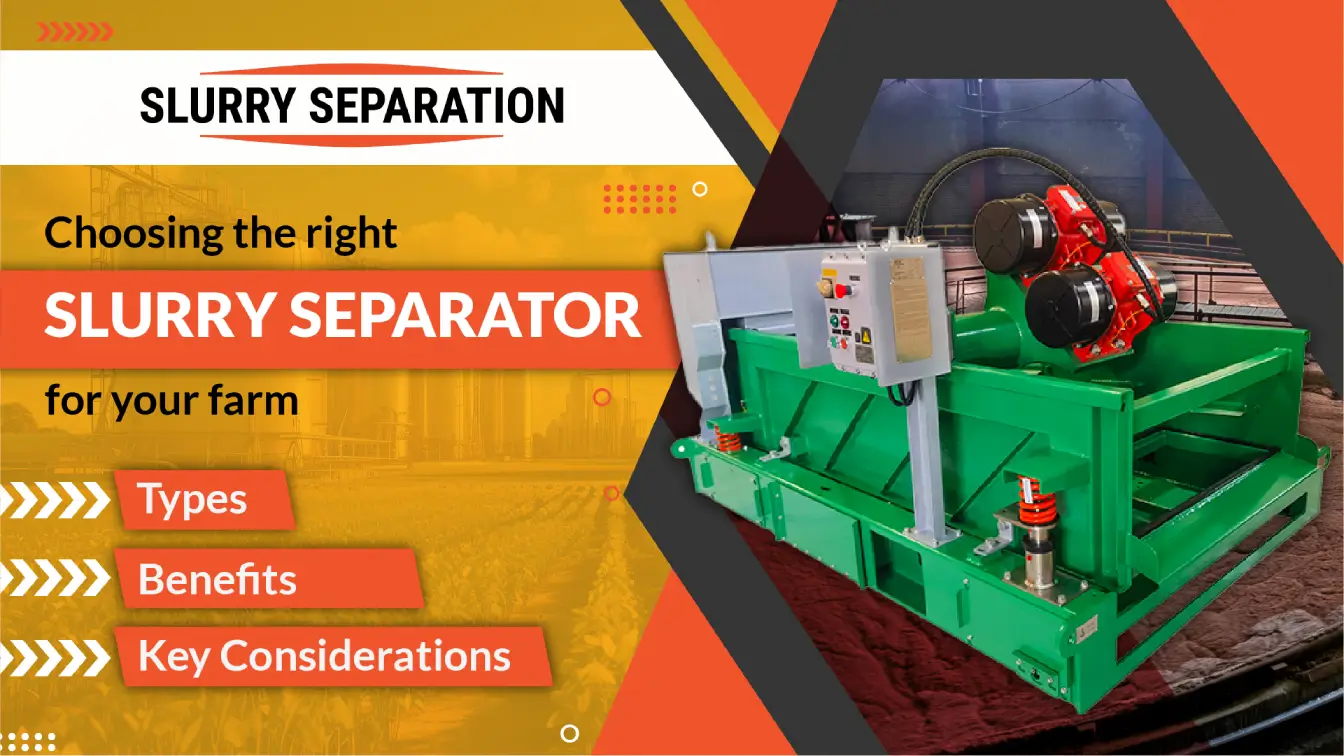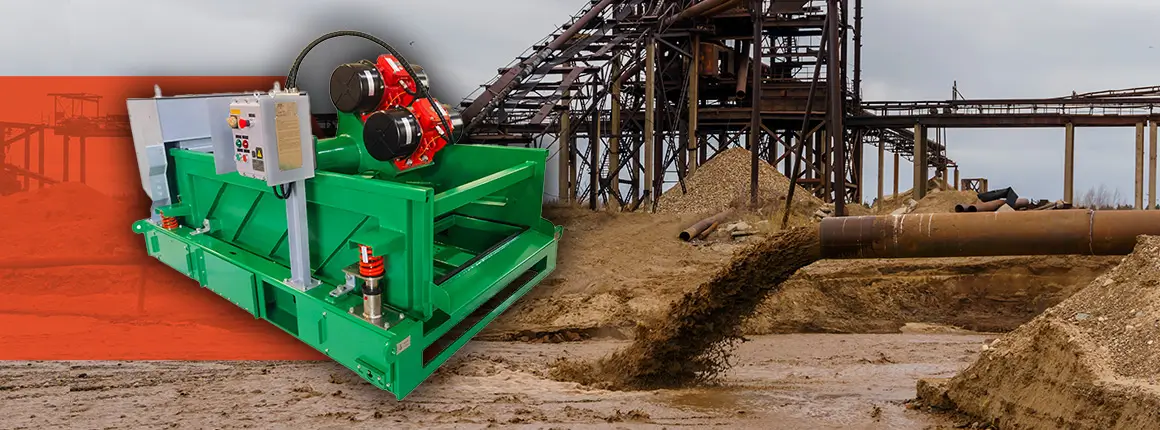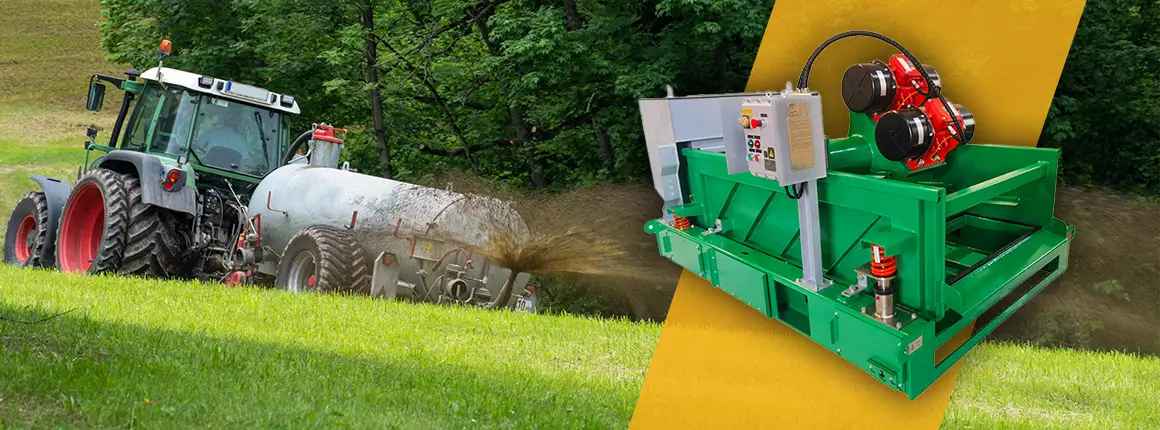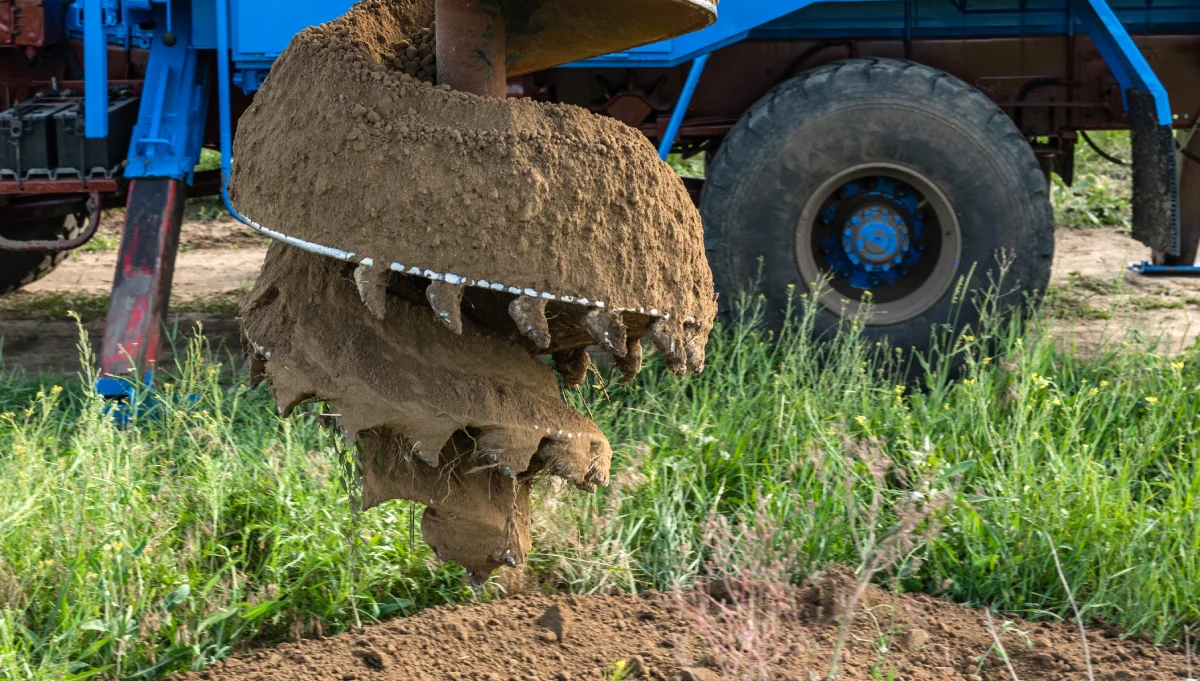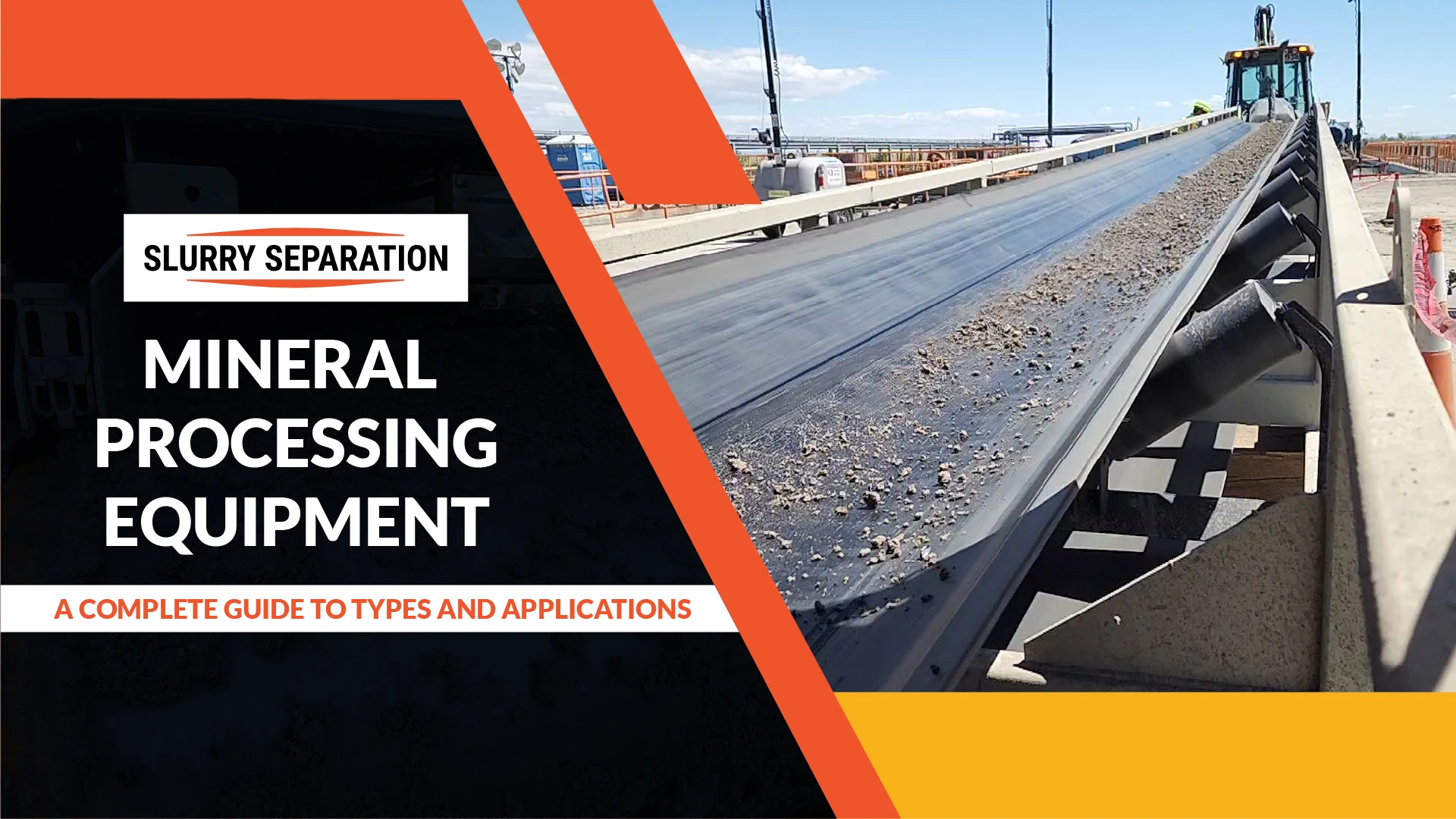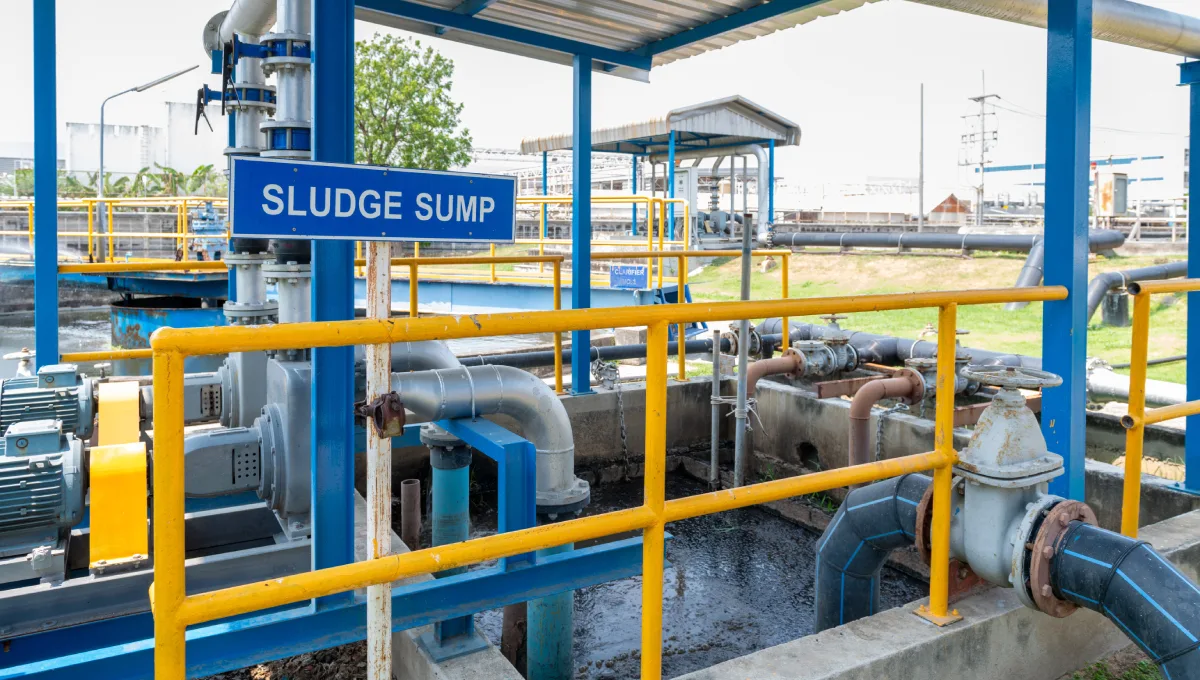- Understanding Slurry Separators
- Benefits of Using Slurry Separators in Agriculture
- Importance of Slurry Management in Agriculture
- Key Features to Look for in Slurry Separators
- How to Choose the Right Slurry Separator for Your Farm
- Top Features to Consider When Choosing a Slurry Separator
- Installation and Maintenance Best Practices
- Future Trends in Slurry Separation Technology
- Conclusion
Slurry management is a crucial aspect of modern agriculture. Effective management not only helps maintain farm hygiene but also plays a significant role in enhancing productivity and sustainability. A slurry separator is a vital tool in this process, offering an efficient way to separate solids from liquids in manure. The solids can then be used as valuable fertilizers or disposed of in an environmentally friendly manner.
Slurry, a semi-liquid mixture of manure and water, is a byproduct of livestock farming, especially in large-scale operations. Managing this slurry is essential to prevent environmental pollution, enhance nutrient recovery, and improve the overall efficiency of the farm. Slurry separators are designed to handle this task by efficiently separating the solid and liquid components, making it easier to manage and utilize the slurry.
This guide provides a comprehensive overview of slurry separators, their types, benefits, and critical features to consider when choosing the best option for your farm. Farmers can make informed decisions that align with their specific needs and goals by understanding these aspects.
Understanding Slurry Separators
Slurry separators are devices used to separate solid and liquid components in manure. They help reduce the slurry volume, making it easier to handle, store, and apply as fertilizer. Various slurry separators are available, each with unique features and mechanisms.
Here are the main types of slurry separators:
Mechanical Separators
Mechanical separators use physical force to separate solids from liquids. These include:
- Rotary Drum Separators: These use a rotating drum with a screen that allows liquid to pass through while retaining solids. The drum rotates continuously, and as the slurry is fed into the drum, the liquid passes through the screen, and the solid material is collected for further use. Rotary drum separators are known for their simplicity and effectiveness in handling various slurry consistencies.
- Belt Press Separators: These use belts to squeeze out the liquid from the slurry, leaving behind a drier solid fraction. The slurry is placed between two belts that move together through a series of rollers, pressing the liquid out of the slurry. Belt press separators are particularly effective for producing a relatively dry solid fraction, which can be easier to handle and store.
Vibrating Screen Separators
These separators use vibrating screens to filter solids from the slurry. The vibration helps to move the slurry across the screen, allowing liquid to pass through while solids are retained. This type of separator is particularly effective for separating fine particles. Vibrating screen separators are commonly used in applications where precise separation of fine solids is required.
Decanter Centrifuges
Decanter centrifuges use centrifugal force to separate solids from liquids. The slurry is fed into a rotating drum, where the heavier solid particles are flung to the outer walls while the lighter liquid phase is collected from the center. This method is highly efficient and can handle large volumes of slurry. Decanter centrifuges are known for their high separation efficiency and ability to handle various types of slurry with different solid concentrations.
Screw Press Separators
Screw press separators use a screw mechanism to press out liquid from the slurry. As the screw rotates, it pushes the slurry through a cylindrical screen, separating the liquid from the solids. This separator type is known for handling high volumes and producing a relatively dry solid fraction. Screw press separators are widely used in livestock farming due to their robustness and reliability.
Benefits of Using Slurry Separators in Agriculture
Implementing slurry separators in agriculture offers several benefits, including:
Improved Manure Management
Slurry separators help reduce the volume of manure, making it easier to handle and store. This also simplifies the application of manure as fertilizer, ensuring a more even distribution and better soil integration. Efficient manure management leads to healthier soil and crops, ultimately boosting farm productivity. By reducing the volume of slurry, farmers can manage storage and transportation more effectively, leading to cost savings and operational efficiencies.
Enhanced Nutrient Recovery and Utilization
Slurry separators allow for better nutrient management by separating solids from liquids. The liquid fraction can be used as a nutrient-rich fertilizer, while the solid fraction can be composted or used as bedding material. This dual-use approach maximizes the value derived from manure and supports sustainable farming practices. Enhanced nutrient recovery ensures that essential nutrients are returned to the soil, promoting healthy crop growth and reducing the need for chemical fertilizers.
Reduced Environmental Impact
Proper slurry management helps reduce the risk of nutrient runoff and groundwater contamination. This is crucial for maintaining environmental health and meeting regulatory requirements. By effectively separating and managing slurry components, farmers can minimize their operations’ environmental footprint. Reducing nutrient runoff helps protect water bodies from pollution and supports the ecosystem’s overall health.
Increased Farm Productivity and Efficiency
Efficient slurry management leads to better crop yields and healthier livestock. It also reduces labor and operational costs associated with handling and applying manure. Farmers can streamline their manure management processes by investing in slurry separators and focusing on other essential farm activities. Improved efficiency in manure handling translates to more time and resources available for other critical aspects of farm management.
Importance of Slurry Management in Agriculture
Overview of Slurry in Farming: Definition and Sources
Slurry is a semi-liquid mixture of water and solid particles commonly found in animal manure. It is produced in large quantities in livestock farms and poses a significant challenge in handling and disposal. The primary sources of slurry include cattle, pigs, and poultry farms, where animal waste is collected and stored in slurry tanks or lagoons.
Challenges Associated with Slurry Management
- Volume and Storage: Managing the large volume of slurry produced can be complex, especially in storage and transportation. Slurry takes up significant space and requires proper storage facilities to prevent overflow and environmental contamination. Inadequate storage can lead to pollution and health risks.
- Nutrient Runoff: Improper handling of slurry can lead to nutrient runoff, causing water pollution and eutrophication of water bodies. Excess nutrients, particularly nitrogen and phosphorus, can lead to the growth of harmful algal blooms and degrade water quality. Nutrient runoff can have severe consequences for aquatic ecosystems and human health.
- Odor and Hygiene: Slurry can produce unpleasant odors and harbor pathogens, posing health risks to humans and animals. Effective management practices are necessary to control odors and minimize the risk of disease transmission. Proper slurry management helps maintain a healthy and hygienic farm environment.
Benefits of Effective Slurry Management for Farm Productivity and Environmental Sustainability
Effective slurry management helps mitigate these challenges, leading to better farm productivity and environmental sustainability. Properly managed slurry can be a valuable resource, providing essential nutrients to crops and improving soil health. Additionally, efficient slurry management practices help reduce the environmental impact of farming operations and contribute to the overall sustainability of agriculture. Farmers can enhance their operational efficiency and promote long-term sustainability by adopting best practices in slurry management.
Key Features to Look for in Slurry Separators
When choosing a slurry separator for your farm, consider the following features:
Capacity and Throughput
Select a separator with a capacity that matches your farm’s slurry production. Ensure that the throughput rate is sufficient to handle the daily slurry volume. This will help avoid bottlenecks and ensure smooth operations. Adequate capacity and throughput are essential for maintaining efficient manure management and preventing operational delays.
Efficiency and Separation Quality
Look for separators that offer high separation efficiency, ensuring maximum recovery of nutrients and minimal liquid content in the solid fraction. High-efficiency separators help in maximizing the value derived from manure and reducing waste. Separation quality is critical for ensuring that the liquid fraction is nutrient-rich and the solid fraction is adequately dry for handling and storage.
Durability and Maintenance Requirements
Choose a separator made from durable materials that can withstand the harsh conditions of farm operations. Consider the maintenance requirements and ease of servicing to ensure long-term reliability. Long-lasting and low-maintenance separators help minimize downtime and reduce operational costs. Investing in high-quality equipment ensures that the separator can withstand the rigors of daily farm use and provides long-term value.
Cost and Return on Investment
Evaluate the cost of the separator and compare it with the potential benefits, such as improved manure management, nutrient recovery, and reduced labor costs. Consider the return on investment over the long term. Investing in a high-quality separator can lead to significant cost savings and increased profitability in the long run. A thorough cost-benefit analysis helps make an informed decision and select a separator that offers the best return on investment.
Ease of Use and Integration with Existing Systems
Select a separator that is easy to operate and integrate with your existing farm infrastructure. This will help minimize disruptions and ensure smooth operations. User-friendly separators with straightforward installation and operation procedures can save time and reduce the need for extensive training. Ease of use and integration are essential for ensuring the separator can seamlessly incorporate into the farm’s manure management system.
How to Choose the Right Slurry Separator for Your Farm
Assessing Your Farm’s Specific Needs and Conditions
Consider factors such as the type of livestock, the volume of slurry produced, and the available storage space. Assess your farm’s specific needs to determine the most suitable slurry separator. For example, a dairy farm with high slurry production may require a different separator than a smaller poultry farm. Understanding your farm’s unique requirements helps you select the most appropriate separator.
Considering Future Scalability and Growth
Choose a separator that can accommodate future growth and scalability. This will help in avoiding the need for frequent upgrades and replacements. Investing in a separator that can handle increased production levels will ensure that your farm remains efficient and productive as it grows. Planning for future scalability ensures the separator can adapt to changing farm conditions and production levels.
Consulting with Experts and Other Farmers
Seek advice from experts and other farmers who have experience with slurry separators. Their insights can provide valuable information on the best options and potential challenges. Networking with other farmers can also help identify reliable suppliers and service providers. Expert consultations and peer recommendations can provide practical insights and help make informed decisions.
Evaluating Cost vs. Benefits
Carefully evaluate the separator’s cost against its potential benefits. Consider factors such as improved manure management, nutrient recovery, and labor savings to determine the overall value. A thorough cost-benefit analysis will help you make an informed decision and select a separator that offers the best return on investment. Evaluating cost versus benefits ensures that the investment in the separator is justified and aligns with the farm’s financial goals.
Top Features to Consider When Choosing a Slurry Separator
Capacity and Throughput Suitable for Different Farm Sizes
Ensure that the separator’s capacity and throughput are suitable for your farm’s size. Larger farms may require separators with higher capacity and throughput rates. Matching the separator’s capacity to your farm’s production levels will help maintain efficient operations and prevent bottlenecks. Adequate capacity and throughput are essential for ensuring the separator can handle the farm’s slurry production without delays.
Efficiency and Separation Quality
Look for separators that offer high separation efficiency and quality. This will ensure maximum nutrient recovery and minimal liquid content in the solid fraction. High-efficiency separators contribute to better manure management and improved soil health. Efficient separation ensures that the liquid and solid fractions are high quality and can be effectively utilized on the farm.
Durability and Maintenance Requirements
Choose separators made from durable materials that can withstand the harsh conditions of farm operations. Consider the maintenance requirements and ease of servicing to ensure long-term reliability. Durable and low-maintenance separators help minimize downtime and reduce operational costs. Investing in high-quality equipment ensures that the separator can withstand the rigors of daily farm use and provides long-term value.
Cost-Effectiveness and Return on Investment
Evaluate the cost-effectiveness of the separator by comparing the initial investment with the potential benefits. Consider factors such as improved manure management, nutrient recovery, and labor savings to determine the overall value. Investing in a high-quality separator can lead to significant cost savings and increased profitability in the long run. A thorough cost-benefit analysis helps make an informed decision and select a separator that offers the best return on investment.
Ease of Integration with Existing Farm Systems
Select separators that are easy to integrate with your existing farm infrastructure. This will help minimize disruptions and ensure smooth operations. User-friendly separators with straightforward installation and operation procedures can save time and reduce the need for extensive training. Ease of use and integration are essential for ensuring the separator can seamlessly incorporate into the farm’s manure management system.
Installation and Maintenance Best Practices
Best Practices for Installing Slurry Separators
- Site Selection: Choose a suitable location for the separator, considering accessibility, drainage, and proximity to slurry sources. Proper site selection helps ensure efficient operations and minimize logistical challenges. A well-chosen site facilitates easy access and maintenance.
- Proper Setup: Follow the manufacturer’s instructions for proper setup and installation. Ensure that all components are securely in place and connected. Proper setup helps prevent operational issues and ensure optimal performance. Adhering to setup guidelines ensures that the separator functions as intended.
- Safety Measures: Implement safety measures to avoid accidents and ensure the safety of operators. This includes providing adequate training to operators and implementing safety protocols. Safety measures help in minimizing risks and ensuring a safe working environment.
Routine Maintenance Guidelines
- Regular Inspections: Conduct regular inspections to identify any signs of wear or damage. Regular inspections help in detecting potential issues early and preventing breakdowns. Timely inspections ensure that the separator remains in good working condition.
- Cleaning and Lubrication: Clean the separator regularly and lubricate moving parts to ensure smooth operation. Proper cleaning and lubrication help maintain optimal performance and extend the separator’s lifespan. Regular maintenance ensures that the separator operates efficiently.
- Component Replacement: Replace worn-out or damaged components promptly to prevent breakdowns. Timely replacement of components helps in maintaining the reliability and efficiency of the separator. Proactive maintenance helps in avoiding unexpected failures.
Troubleshooting Common Issues
- Clogs and Blockages: Clear any clogs or blockages that may occur in the separator. Regular maintenance and proper operation can help in preventing clogs and blockages. Addressing clogs promptly ensures uninterrupted operation.
- Leaks: Check for and repair any leaks promptly to avoid the loss of slurry and nutrient content. Regular inspections and maintenance can help in detecting and addressing leaks early. Preventing leaks helps in maintaining the efficiency of the separator.
- Performance Issues: Address performance issues, such as reduced separation efficiency, by consulting the manufacturer’s guidelines or seeking expert advice. Proper troubleshooting and maintenance can help in maintaining optimal performance and efficiency. Resolving performance issues promptly ensures that the separator functions effectively.
Tips for Extending the Lifespan of Your Separator
- Regular Maintenance: Follow a regular maintenance schedule to keep the separator in good condition. Regular maintenance helps prevent issues and extends the separator’s lifespan. Consistent maintenance ensures that the separator remains reliable.
- Proper Use: Use the separator as intended and avoid overloading or misuse. Proper use and operation can help maintain the separator’s reliability and efficiency. Adhering to usage guidelines ensures that the separator performs optimally.
- Timely Repairs: Address any issues promptly to prevent further damage and extend the lifespan of the separator. Timely repairs and maintenance can ensure the separator’s long-term reliability and efficiency. Proactive maintenance helps in avoiding costly repairs and replacements.
Future Trends in Slurry Separation Technology
Innovations and Advancements in Slurry Separators
- Automation and Smart Technology: Integrating automation and intelligent technology to enhance efficiency and ease of use. Automation and innovative technology can help improve the accuracy and efficiency of slurry separation processes. Advanced technologies enable precise control and monitoring.
- Improved Materials: Development of more durable and resistant materials for increased longevity. Improved materials can help in enhancing the durability and reliability of slurry separators. High-quality materials ensure that separators withstand harsh conditions.
- Energy Efficiency: Innovations aimed at reducing energy consumption and improving overall efficiency. Energy-efficient slurry separators can help reduce operational costs and minimize the environmental impact of farming operations. Energy efficiency contributes to sustainable farming practices.
Emerging Technologies and Their Potential Impact on Agriculture
- Nanotechnology: Use of nanotechnology to enhance separation efficiency and nutrient recovery. Nanotechnology can help in improving the effectiveness and efficiency of slurry separation processes. Advanced materials and technologies enable better separation performance.
- Biotechnology: Application of biotechnology for improved treatment and utilization of slurry. Biotechnology can help in developing more effective and sustainable slurry management solutions. Innovative biotechnological approaches enhance nutrient recovery and waste treatment.
- Sustainable Practices: Adoption of sustainable practices and technologies to reduce environmental impact. Sustainable slurry management practices can help promote environmental stewardship and sustainability in agriculture. Implementing sustainable practices supports long-term farm viability.
Predictions for the Future of Slurry Management in Farming
- Increased Adoption: Greater adoption of advanced slurry separation technologies in farming. Advanced slurry separation technologies can help improve the efficiency and effectiveness of slurry management processes. Widespread adoption of innovative technologies enhances farm productivity.
- Regulatory Compliance: Stricter regulations and standards driving the need for effective slurry management solutions. Regulatory compliance can help ensure farming operations’ sustainability and environmental responsibility. Meeting regulatory standards supports sustainable agriculture.
- Sustainability Focus: Continued focus on sustainability and environmental stewardship in agriculture. Sustainable slurry management practices can promote farming operations’ long-term viability and sustainability. Emphasizing sustainability ensures the future success of farming.
Conclusion
Choosing the proper slurry separator is crucial for enhancing productivity and sustainability in agriculture. By understanding the different types of separators, their benefits, and critical features to consider, farmers can make informed decisions that align with their specific needs and goals.
Effective slurry management improves farm productivity, reduces environmental impact, and promotes sustainable farming practices. Evaluating your farm’s needs, consulting with experts, and investing in reliable and efficient slurry separators are essential.
For more information and to explore various options, visit Slurry Separators to gain detailed insights and product recommendations to help you choose the best slurry separator for your agricultural needs.

